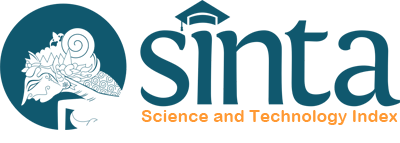Characteristics of Children with Special Needs at Pelangi Kasih Growth and Development Clinic, Pontianak, 2013 - 2017
Abstract
Objective : To find out the characteristics of children with special needs who come to Pelangi Kasih Growth and Development Clinic, Pontianak, 2013 – 2017.
Methods : A descriptive, cross-sectional study, from medical record (MR) data of children with special needs who consulted in the Pelangi Kasih Growth and Development Clinic within the period of 2013-2017.
Results : A total of 302 complete MR data were obtained, consisting of 212 boys. The most consulted child were first-born (195 children). Parents’ concerns about the development of their children begin on average at the age of 1 year 9 months, but many were consulted after about 3 years old. Delayed time in consultation was around 1 year 5 months. Children were often brought on parents’ initiatives and referrals from family/friends (64.9%) higher than referrals from professionals such as pediatricians, general practitioners, and teachers (35.1%). Most major complaint was delayed speech (80.8%). Most children do not have risk factors for developmental disorders (64.6%). Most children had normal nutritional status with normal head circumference.
Conclusion : Development screening should be done routinely to increase awareness of developmental disorders in infants. Special training also in needed to improve the ability of professional in early detection of developmental disorders in infants and children.











